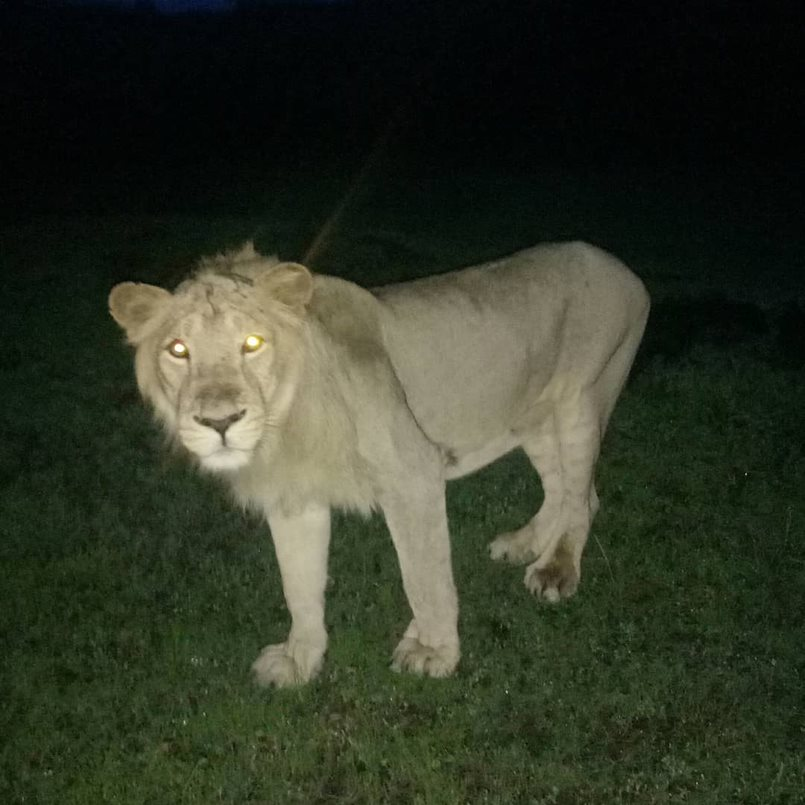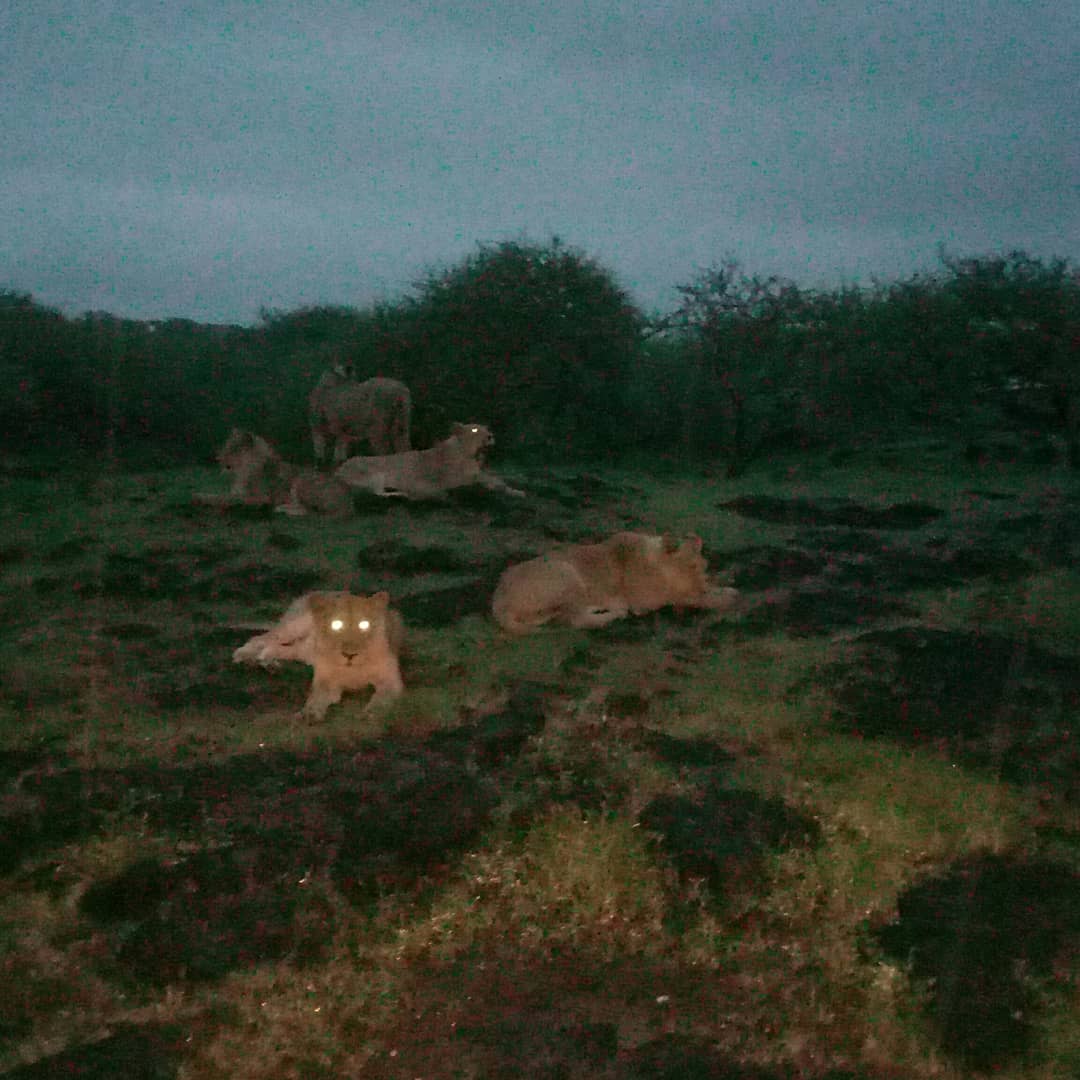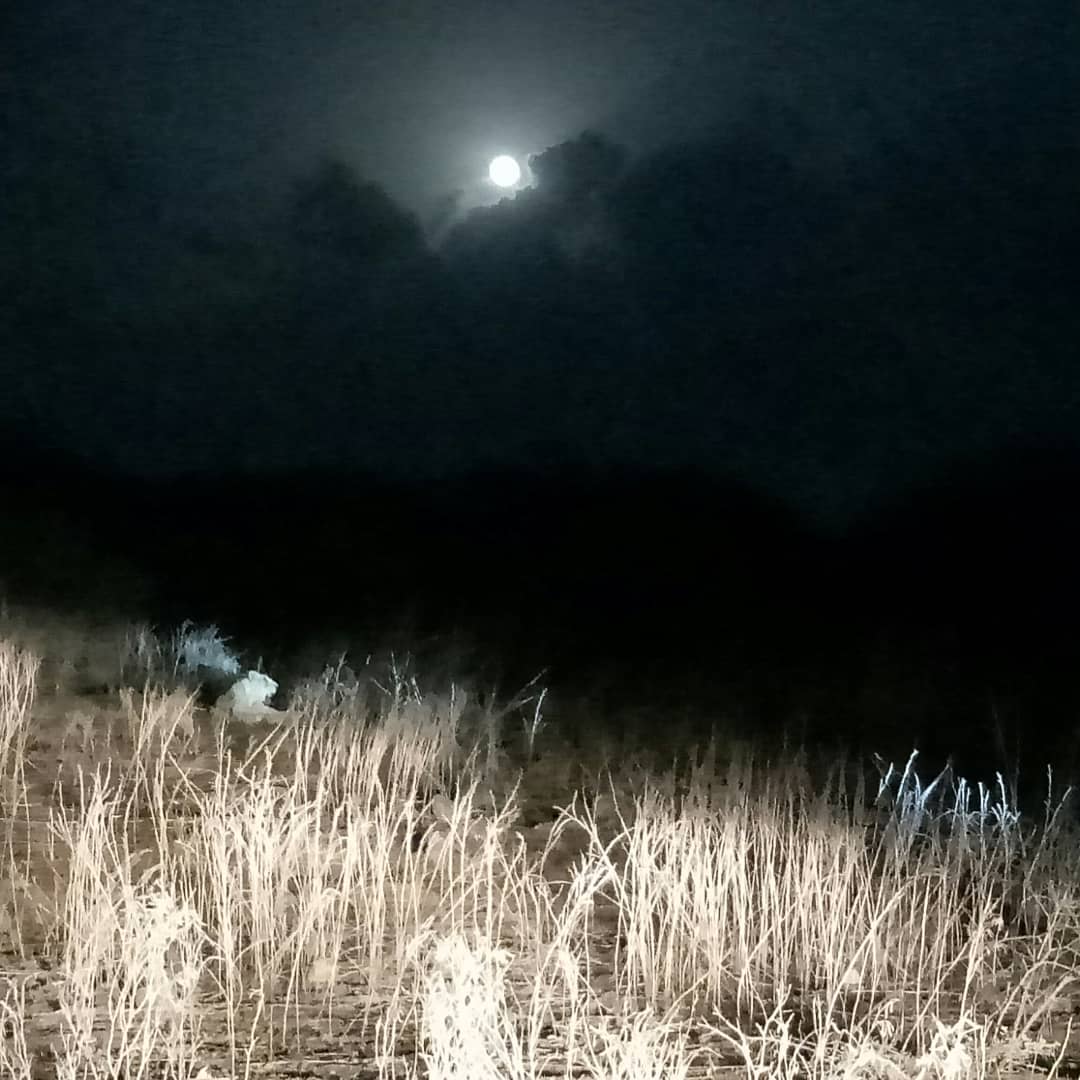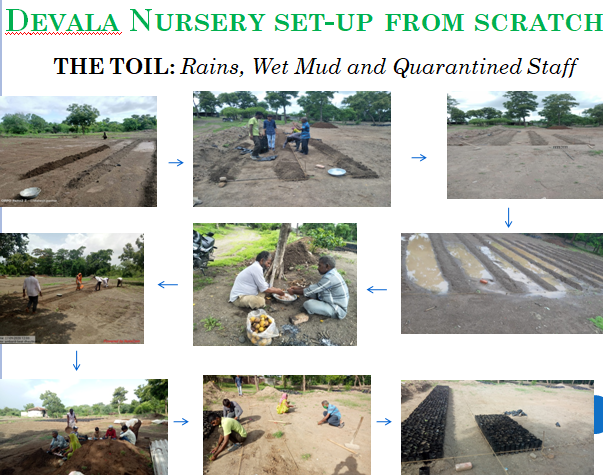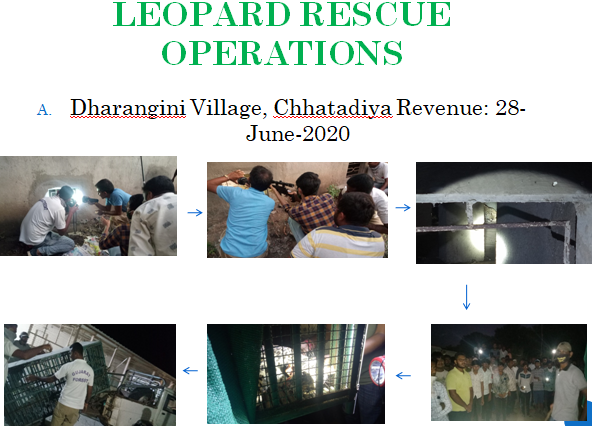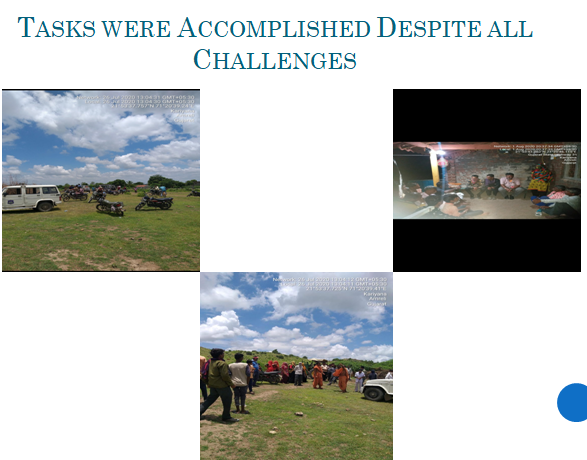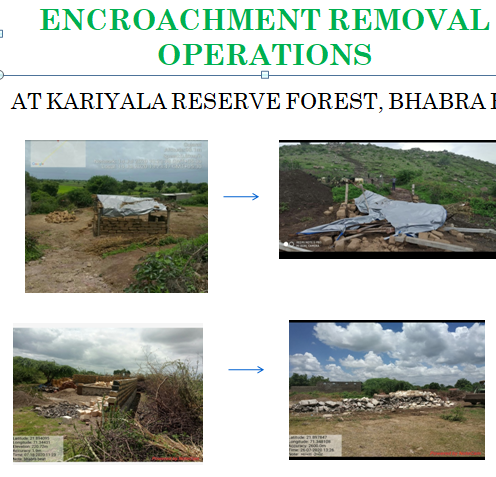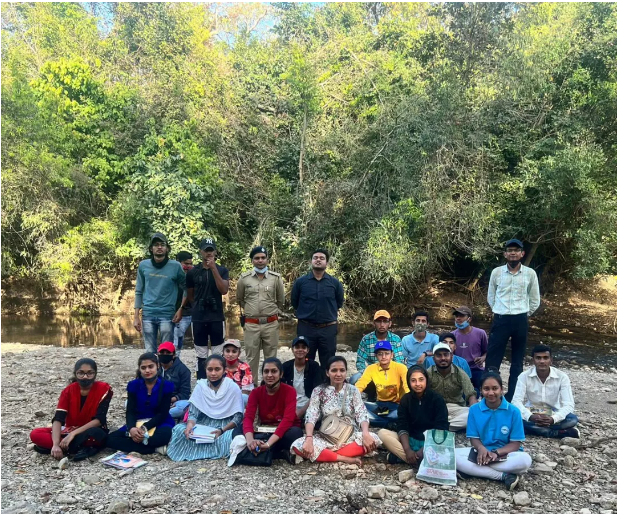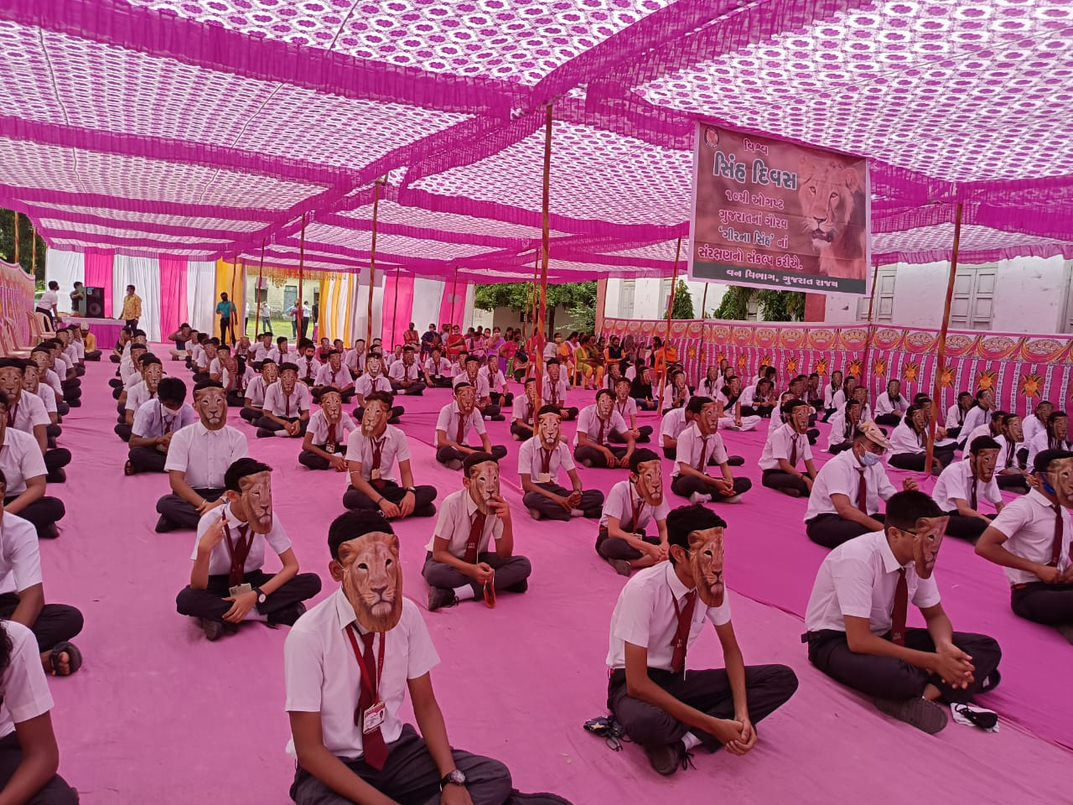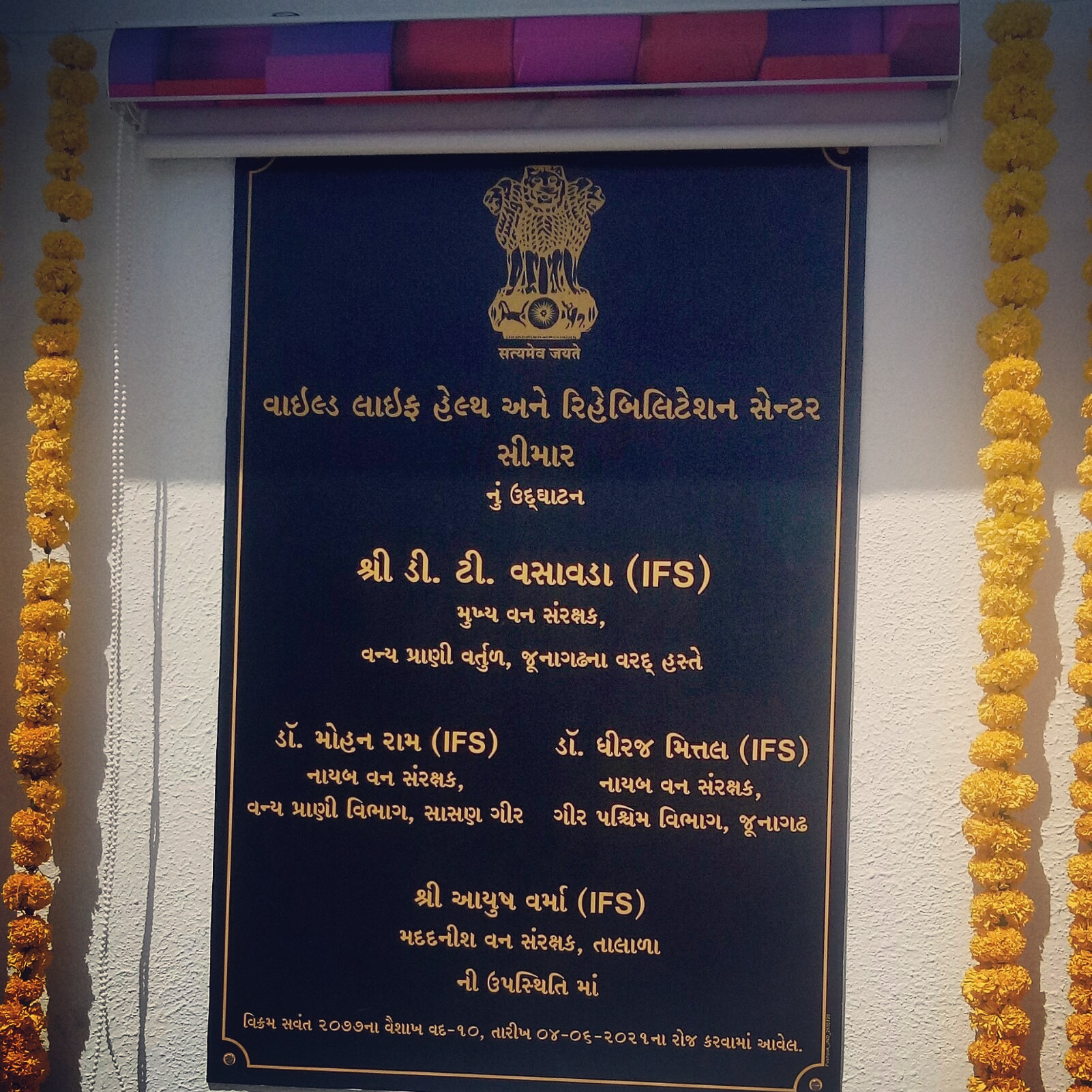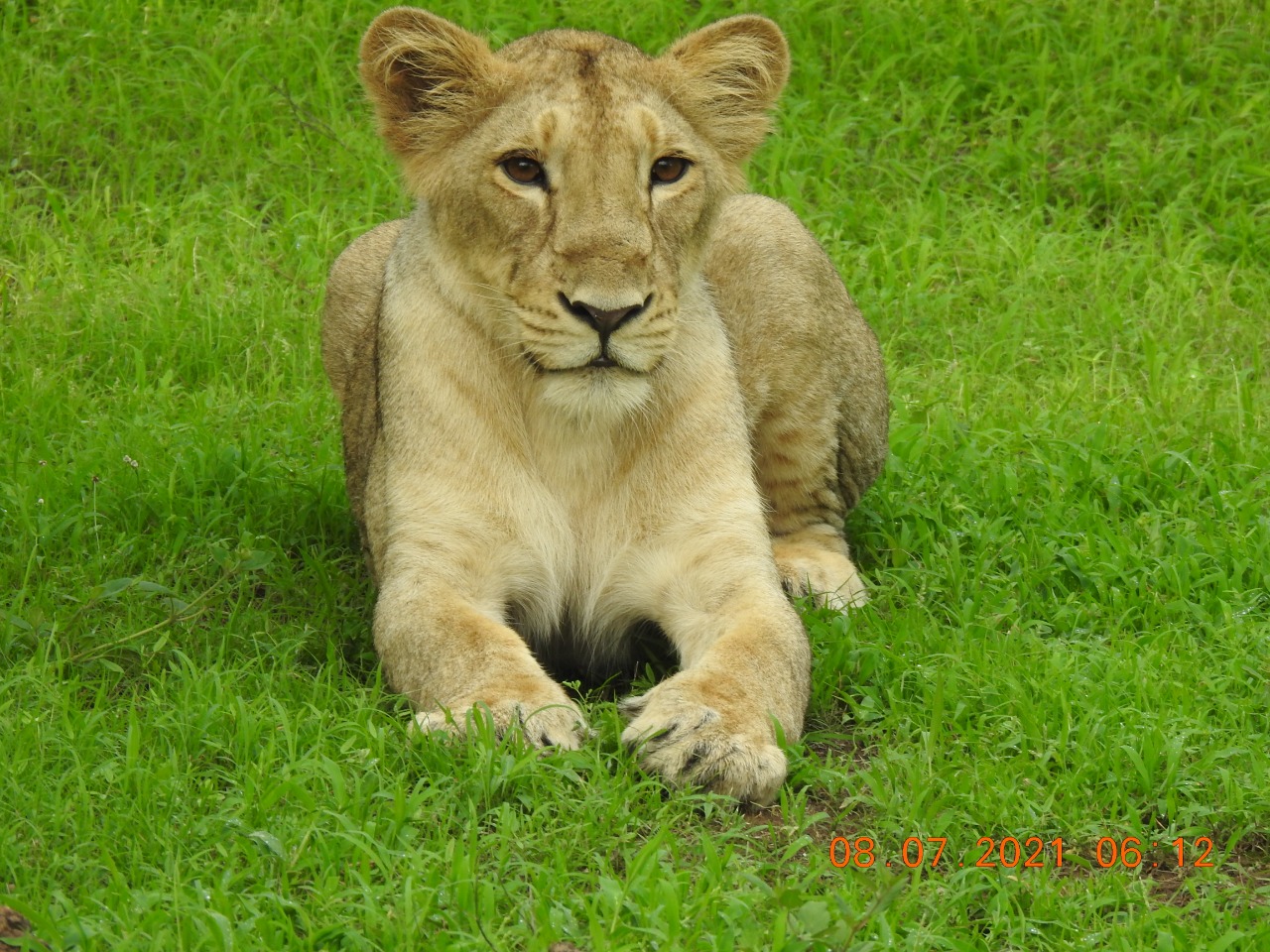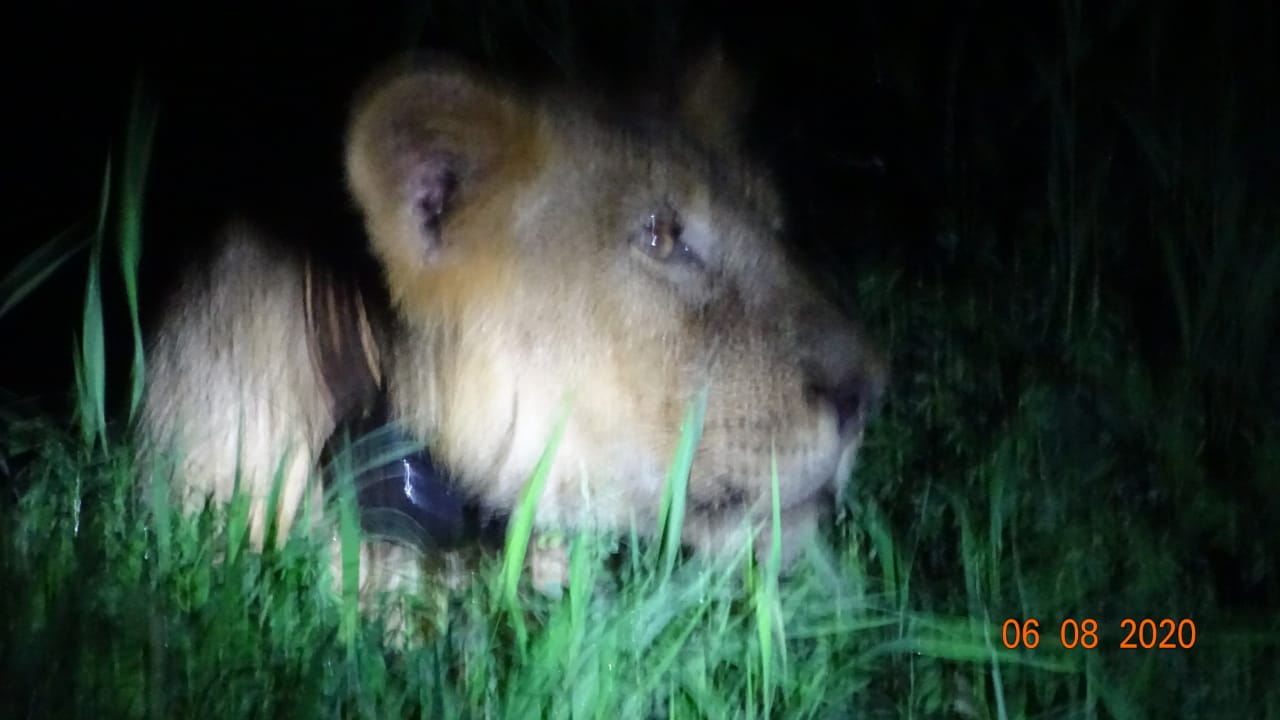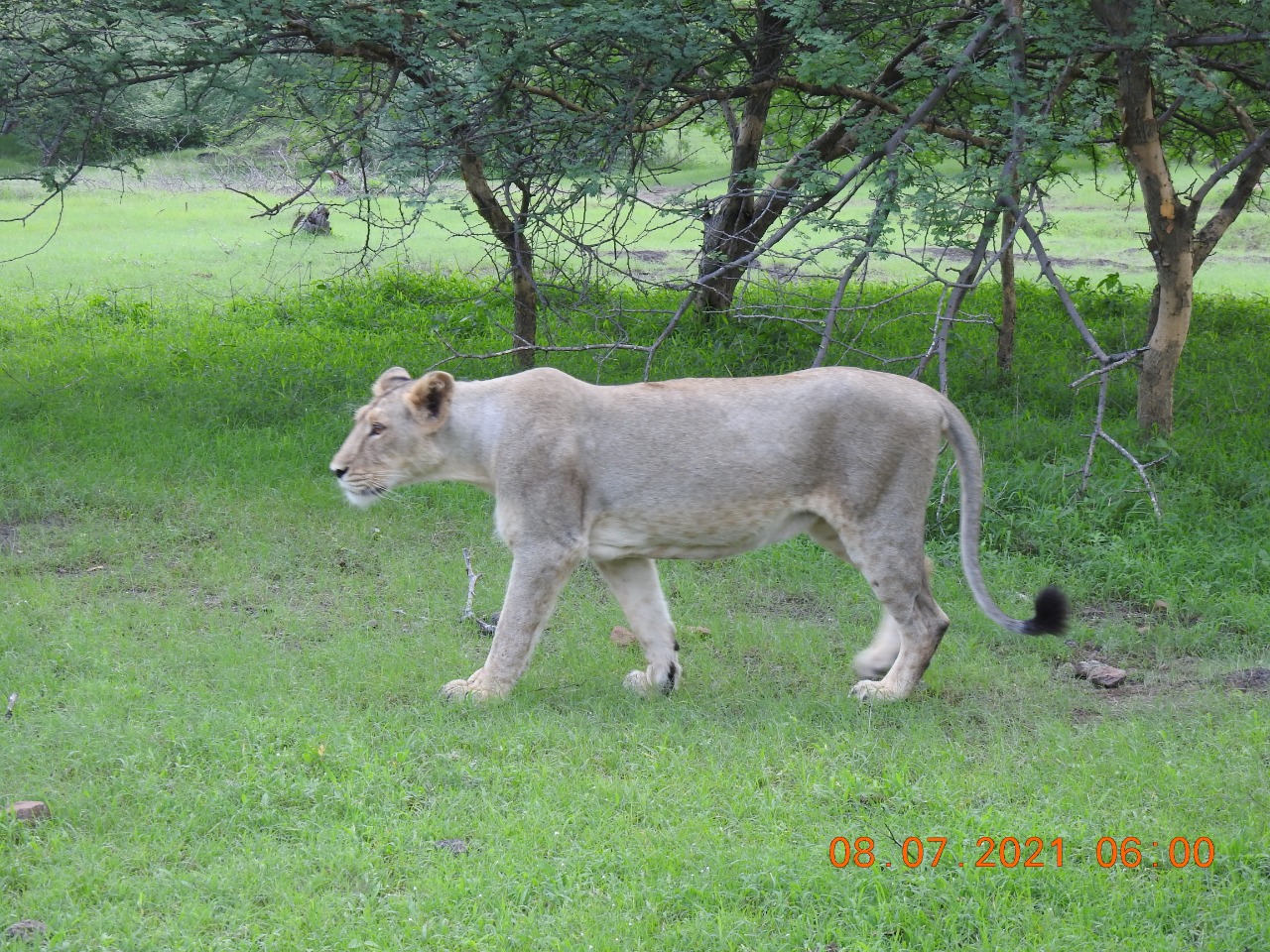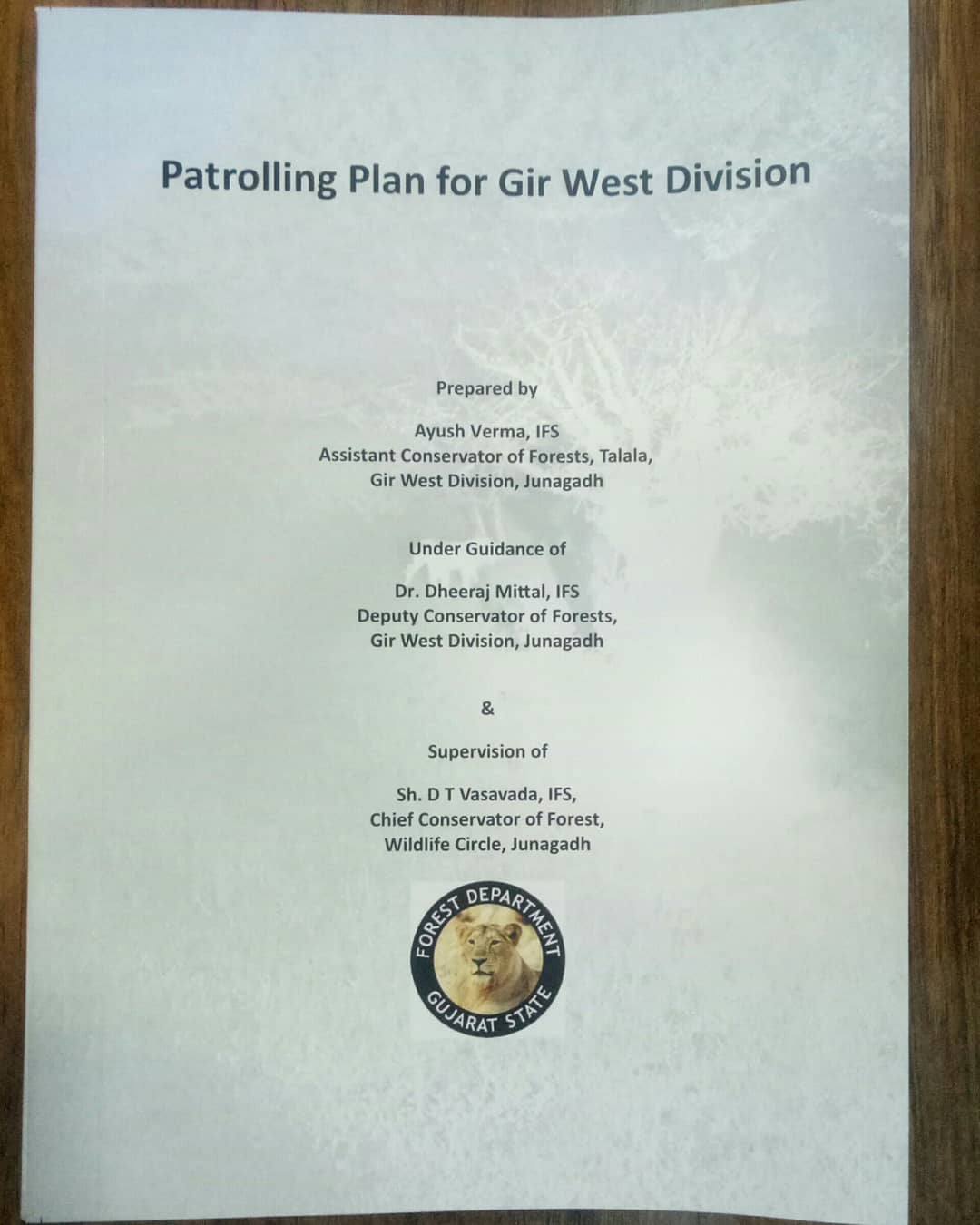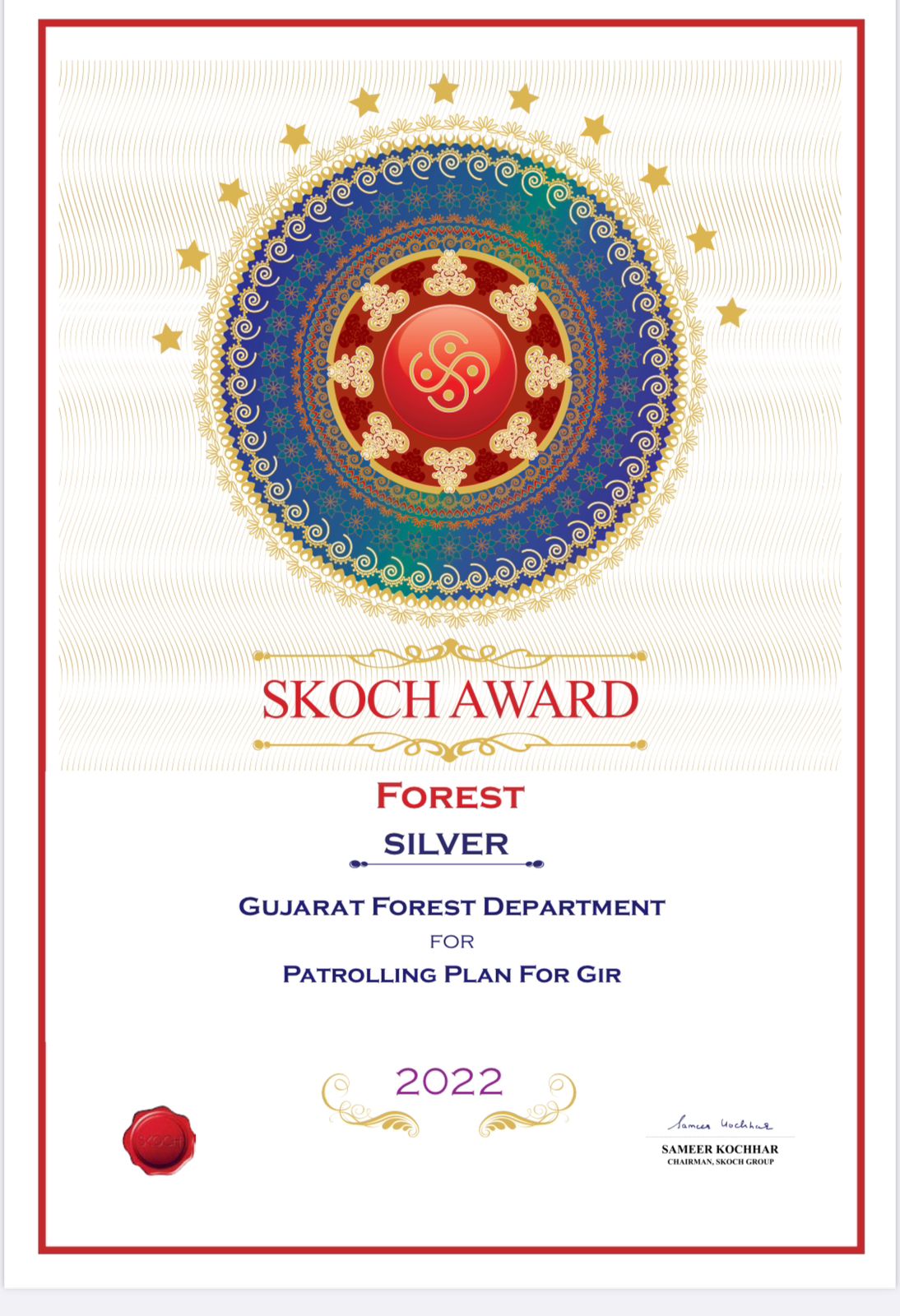An IFS Officer’s Experience at Gir
Blogs Home
- 18 Oct 2022
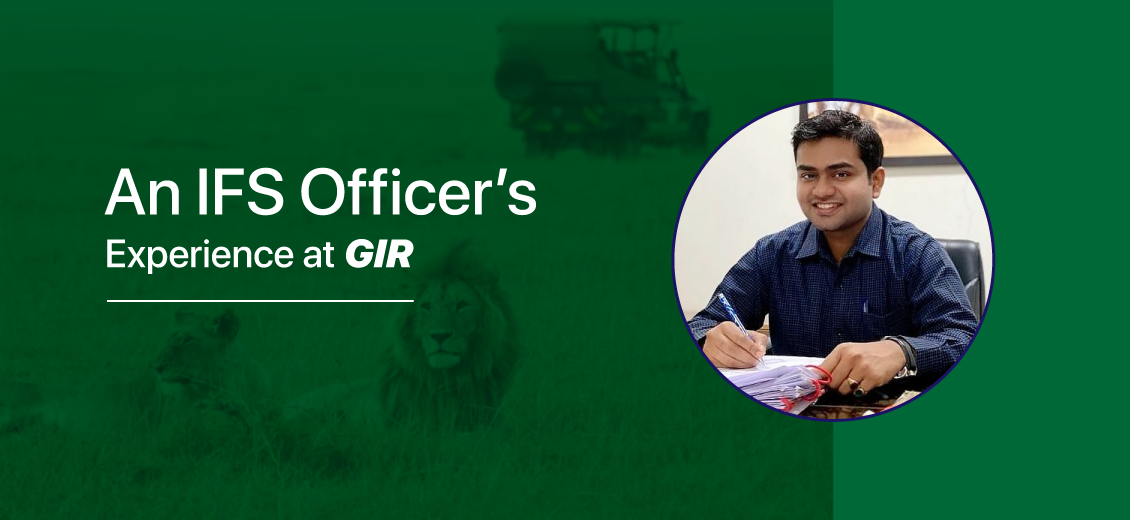
Editor’s Note
Being an IFS aspirant, you must have often pondered upon what your life will be after clearing the UPSC exams. How will it be? What will be the responsibilities? Will it be thrilling and dangerous or will it be humbling? To quench your doubts and comprehend the gravity of the life of an IFS Officer, you must read this blog written by AYUSH VERMA, IFS. So please read ahead and witness the realities that you too might have to face one day…
About Ayush Verma IFS
Ayush Verma, an Indian Forest Service Officer of the 2018 batch, Gujarat Cadre, is a recipient of the Government of India's Gold Medal in All-Round Outstanding Performance (Gold Medal) Topper in Core Forestry and Sanjay Singh Memorial Prize.
He has also received the Hill Memorial Prize, the K.M.Tiwari Memorial Prize for Forest and People, Dr B.N. Ganguly Award of Academic Excellence and K.P. Sagreya Shrestha Vanik Puraskar in his professional training at IGNFA An Engineering Graduate from IIT BHU. He presented a Model on Geo-Sequestration in Tata Steel that evinced his interest in the field of environment.
His natural love for the outdoors, compassion for animals and an internal urge to pay his "Prakriti Rna" to Mother Nature have drawn him into Forest Services. He has authored a Book on Patrolling Plans for Gir during his stint as Assistant Conservator of Forest in the Gir (West) Division. Currently, he is Deputy Conservator of Forests, Social Forestry Division BOTAD.
In the Forestry Sector, his areas of interest include Forests and People (for which he had written a Report on "Tribals and Forests" in his IGNFA stint) and Wildlife Conservation to which he Dedicates his Self-Authored PATROLLING PLAN FOR Gir.
In this write-up, he encapsulates his experiences, learning, works executed on the field and a first-hand account of his field posting in Gir Forest. He has dwelled on the following aspects:
- Appointment at Gir and the Backdrop
- Day 1 at the Office and Field
- Lion Census and Poonam Avalokan
- Major Observations and Learnings at Gir
- Range Charge at Gir (East)
- ACF Charge at Gir(West)
- ACF Charge at Gir (Sasan)
- My analysis of the King of the Jungle
- What sets apart the Indian Forest Services?
Appointment at Gir and the Backdrop
I was appointed ACF (Supernumerary) in Gir Forest on 29th May 2020.
Gung-ho I was and exclaimed, “Gir it is!!” Just thinking about the Land of the King of Jungle and the sole abode to the Asiatic Lion in the world broke the blues of the then ongoing 1st wave of the Corona Pandemic.
Gujarat IFS Officers of the 2018 batch were the first to be called to their cadre in those times of ‘fear-gripped psyche’. But for me, now, a sanguine sunrise had emanated. I say so because I got acquainted with the charm and charisma of this megafauna in our field exposure trip to Gir in February 2019. I was a Probationer in my Professional Training at IGNFA then.
Back then, as a probationer, I often engaged in a meticulous ‘guesstimate’ of my yet-to-be-allotted cadre. I wished to come to serve this place, and as luck would have it – I was destined for Gujarat Cadre.
“Lucky you are”, my batchmates congratulated me, for we had witnessed seven lions within an hour of our Safari at Gir. At the same time, we went to 7 Tiger Reserves and couldn’t spot a single Tiger, except for one accidentally! So, in a lighter vein, we called it a “Paisa-Vasool” Wildlife Safari! (Not to Offend the Tiger-lovers, but I’ll explain later in this article why this difference in sighting probability is so stark).
Day 1 at the Office and Field
1 st June 2020 marked the first day of my Professional Field-Life as an IFS Officer. Following the grooming lessons given to us by the Foundational Course at LBSNAA and IGNFA (Indira Gandhi National Forest Academy), I donned a waistcoat with IFS Badge on my first day at work.
Ludicrous as it may appear, for summer was at its peak, and a hot sultry afternoon made me rethink my attire. My then DCF sir appreciated my excitement to work and, in the same breath, instructed me to go for a field visit while being dressed as a ‘true Forester!’
On the first day of the first Field visit, I reached a patch of Reserve Forest, all unescorted except for my driver, from where an Encroachment Removal, i.e. vested interests of different sections, issues of human rights had taken place just two days back. As my vehicle stopped at the site, I received a salutation from over a dozen (14 precisely!) men/women dressed in Khakis, ranking from Beat Guard to Range Forest Officer level.
IFS Ayush Verma at ACF Office
I still remember that beautiful feeling, for it was an unprecedented moment in my life. An unmistakable thought rang through my head - all those years of my, as Shakespeare puts it - ‘Salad days’ spent Studying, Struggling, Sacrificing, Failing yet bouncing back in the face of adversities of the UPSC exam probably had not gone waste. Albeit Immediately, I recollected my thoughts, and it dawned upon me that the real ‘service’ begins now in the field, in action, for a higher cause – for the forest, the wildlife, the environment and eventually for humanity!
As a novice in the Field, I followed the humble advice of my then very senior PCCF Sir, who gave this veritable Talisman to me during my Gandhinagar attachment before being allocated posting at Gir – “2 Strong legs, 2 Keen eyes, and an open observant Mind make a perfect forester!”. This translates to “Observe More, Walk More in Forest and Interact more with the staff” – only when you learn from field staff first will you be able to effectively instruct them…
Guided by this spirit, I inquired field staff on the nitty-gritty of the case in detail, inspected the site, learnt about the action taken, got to appreciate the challenges faced in removing this encroachment, went through the records, documents and legal notices, appreciated the fact that quick-growing plant species are used to reclaim the encroached land, etc., etc...(List could go really long!)
Just when I was about to leave, the staff received a message on Jungle Walkie-Talkie (for Forests are areas of low connectivity) that a lioness had been spotted in proximity to the site. So, I was glad to savour “Sinh-Darshan” on the inaugural day of my field.
I was amazed both by the audacity and dexterity of my field staff and the humbleness of the ‘Gentle Giant’ for there was a distance of less than 30metres between the lioness and the staff. I, who again was on foot with my other staff, was a bit scared at first, but my staff, who were well-cognizant of the lion's behaviour, shooed my apprehensions of a ‘safe distance'. Meanwhile, the royal animal glanced at us yet remained indifferent, for the intelligent mega-fauna could read through our innocuous intentions. But, filled with pity, I asked my staff to no longer ‘disturb’ the animal in her tranquil.
My experienced staff, however, enlightened me on the age, gender, traits and other characteristics of lions based on physical observation of animals (also a deep subject!) from a distance of around 100metres now. So, the first day in my field was a fulfilling one…
Lion Census and Poonam Avalokan
Just four days after joining, I was (fortunately) a part of the LION CENSUS-2020 exercise carried out on 5th June 2020. It is a thorough Lion Enumeration exercise based on Direct Physical Sighting on Block-Count Methodology wherein a Beat (manned by the beat guard) – a basic administrative unit in Forest Division- is considered as one block. This exercise is carried out on full moon night (when visibility is best) and day. Lions, so enumerated, are recorded with GPS locations and uploaded in real-time in E-Guj Application. Also, the Enumeration is reported to the nearest Wireless Station present in every range of Gir. Enumeration includes details like the number of lions, their age, their gender, and any peculiarity of their physical features. Also, live locations of some lions/lionesses that are Radio-Collared are relayed in real-time, which assist in locating them.
Lion Photograph taken at night by IFS Ayush Verma
I spent over 16 hours in the field that day (and night) and, being ACF (Supernumerary), verified more than 30 lions in prides of different sizes but believe me, the charm, pride and delight that I got, having savoured by the sight of such a count of Asiatic lions, was worth the toil.
Group of lions sitting in their natural habitat
In this entire exercise, what moved me was the commitment of our field staff, who, despite the odd hours, braved the darkness and inherent risks of the jungle and were full-spirited in this enumeration exercise.
It is pertinent to point out that while the Lion Census is carried out once in five years, we at Gir carry out the Lion Enumeration exercise every Full Moon day/night, i.e. once a month. This helps keep track of Lion Movements and even an anticipation of possible human-lion conflict if a lion strays into human habitation.
Photo of lions sitting in Gir Forest at full moon night
With time, every beat guard and other forest staff are practically equipped with first-hand experience of every individual lion’s behaviour, movement patterns and even their temperament!
While every day at Gir brought new challenges and opportunities to learn, I’ll encapsulate my experiences more precisely lest this article should become a book!
As ACF (Supernumerary), I had my Range Charge at Gir (East) Division while my full-time ACF Charge was in Gir (West) Division along with an additional charge of Gir (Sasan) for some time. Sasan Division is devoted to tourism and research, while the first two are territorial in nature, and they jointly cover the entire Gir Wildlife Sanctuary, National Park and a sizable Reserve Forest, Protected Forest and Unclassed Forest too.
So, I feel highly fortunate to have varied experiences.
My Range Charge at Gir (East)
From the date of joining till a score of days of attachment with Gir (West) Division, Junagadh Wildlife Circl
Independent Range Charge came at Sarasiya Range, Gir(East) Division. Range Forest Officer heads a range and is a 3-Star Uniform Forest Personnel. My Range Charge, though, had been there for less than two months but was action-packed. Within an hour of joining my duties, I came across an RTI Application that made me peep thoroughly in the rules book;
- In the first week itself, I, with my team, carried out a couple of Leopard Rescue Operations in human habitation areas and experienced the need of cooperation with society, mobilisation of resources, mob management and need to have a trained and well-equipped rescue team;
- Initiated new Soil and Moisture Conservation structural works like Forest Ponds, Percolation Pits, check dams, Mounds etc. – the textbook learning of an umbilical linkage between Forest and Water livened up for me as I testimonied the ground-water recharge, control of drought & floods and other benefits because of these structures.
- Carrying out three Encroachment Removals made me witness the dynamics of forest protection, political pressure, vested interests of different sections, issues of human rights, coordination with police and administration, internal inertia of society etc.
- Carried out Special Patrolling Drives at Night and odd hours to keep a check on Illegal activities like Illicit Lion Shows by Baiting, Illegal Grazing, Illegal Entrance into Sanctuary and Reserve Forest areas etc.
- Set up a Plantation Nursery from scratch, battling heavy rains.
Nursery setup at Gir National park for Afforestation
What was even more challenging was that I had to be well-versed in the local Gujarati language, as all official Communication was carried out in the same and to connect with my staff and society at large, knowledge of the local language is indispensable.
At the same time, treks through the Pristine Gir Forest and to the umpteen Hillocks in this land keep the spirit of exploration and adventure high.
My ACF tenure at Gir (West)
Life of an IFS Officer is full of possibilities
My ACF tenureship was about 16 months – A considerably Long Period to learn, explore and contribute towards Wildlife Conservation. As ACF, I had jurisdiction over a Sub-Division named Talala with four ranges. Key activities executed were:
- Inspection and Supervision of Work & Physical Monitoring of ongoing works – Focus was 100% Physical Verification of all tasks to ensure Work Quality and prevent any potential wrong work execution.
- To serve as PIO (Public Information Officer) for the Division dealing with RTI – the emphasis was on the provisioning of Correct Factual Information available on records strictly in Compliance with the RTI Act and Guidelines.
- To serve as the Nodal Officer of the Division for Legal Cases: Learned the nitty-gritty of legal matters. As a representative of the Division at the High Court, I gained insights into the functioning of Judiciary in the backdrop of Government functioning.
- Conducting Inquiries into Various cases: Allegations of wrongdoing had to be investigated thoroughly for want of concrete evidence lest it should not become a tool to harass officials working dutifully.
- Dealing with Human-Wildlife Conflict: This included a panoply of activities ranging from Sensitisation Drives through mechanisms like “Gir Samvad Setu” (Community Dialogue) to provisioning of timely compensation on cattle depredation by Wildlife;
- To carry out wildlife rescue and relief operations and to conduct field Patrolling for Wildlife Conservation and Protection. This included Regular Patrolling with an element of surprise and More Intensive Night Patrolling during festivals when the tendency for Illegal Lion shows is higher.
Nature Camp at Gir National Park
- Supervision of fire-line works: In the transition season from winter to spring, Fireline works are carried out intensively in Gir Forest to reduce the fuel load, thus abating the chances of forest fire both in intensity and count.
- Conducted Auctioning of Wood at the depots and out-of-usage dead stock of the Division.
- Carried out Nature Education Camps where school and college students were taken for hikes amidst the greens, and tenting/camping within the specially designed area was carried out. When Nature becomes a laboratory, it directly provides a fulfilling experience to youngsters and helps develop an appreciation for the importance of forests, of flora-fauna and the environment at large.
Awareness Drive at Gir National Park
- Supervised new construction work of an Animal Rescue Centre in one of my Ranges – It was a moment of pride to see my name etched on Inauguration Stone for the first time!
My ACF Charge at Gir (Sasan)
IFS Officer Ayush Verma, with his Government Vehicle
Sasan Division is mandated to carry out eco-tourism, research, public liaising and rescue operations. Apart from the usual tasks as ACF, the following noteworthy learnings/work execution were carried out by me in my Additional Charge of ACF Sasan.
- Successfully organised WORLD LION DAY CELEBRATION event Addressed by Hon'ble Chief Minister in the capacity of NODAL OFFICER Benefit - Public in general and Students in Specific were sensitised towards Lion Conservation.
- Protocol duties on visitation of high-level dignitaries, Hon'ble Governor, Hon'ble CM, Hon'ble Judges, and other senior officials.
- Sasan has a specialised Hi-Tech Monitoring Unit that houses facilities to track, in real-time, the safari Vehicles to ensure they comply with the rules; to monitor CCTV Cameras at different Forest check-posts and to track Radio-Collared lions and Geo-Tagged avifauna.
- Supervised Training of Wildlife Trekkers.
- Contributed to Publications of the Division.
My analysis of the King of the Jungle
Eulogised in folklore for its courage, bravery and boldness, Lion is not just a Royal animal in the true sense but a Gentle Giant too! It is always a delight to gaze at the handsome fauna. Admittedly, while I witnessed lions almost every day in the field, yet every observation was a thrilling experience in its own right, and every encounter brought a sense of fulfilment to my mind.
Lion’s photograph clicked by IFS Ayush Verma
Based on my direct experience from the umpteen sightings I had, including a few close ones, I feel delighted to present some interesting aspects of the mighty lion’s behaviour (though there are Volumes of books on this subject!):
- Lion is a Social Animal, i.e. it lives and interacts in groups known as Pride. More commonly, pride of females and their cubs. The rearing of offspring is thus often a group activity. Small groups of pre-prime adults (3-5 years of age) and sub-adults (2-3 years) lions are also common. Adult Male lions may be solitary or in small groups.
- Lions are crepuscular, i.e. more active during dawn & dusk. Maximum Hunting tendency is during this time of day.
- Physical characteristics of lions that are indicators of their age include- Hair tufts at the tail, manes, teeth, facial features (more rugged with age), and a general build. These features are identified by forest personnel for determining the age and gender of a lion during their enumeration.
- Lion cubs are adorable. At birth, they appear innocuous and couldn’t even open their eyes for the first 2-3 weeks of birth. They are thus highly vulnerable. So, the lioness keeps them hidden for two months, even from the male lion. It is also noteworthy that very young cubs, if suspected by their mother to have been contacted by humans, desert them. So, forest personnel wait and watch for over ten days, then only go for their rescue. On attaining the age of 2 months, they are gradually introduced to meat, and by 6-7 months, they completely shift to a meat diet. By age 2, they fully attain hunting skills, which paves the way for their independent existence away from their original pride.
Photograph of lions clicked by IFS Officer Ayush Verma in Gir National Park
- Asiatic Lions, as differentiated from African Lions, have characteristic Belly Folds, sparser manes and, on average, 5-15% smaller in size.
- They have a strong sense of Territoriality – Male lions can have a territory ranging anything from 20 to over 165 sq km, while female lions usually have nearly 1/3rd of this range. Territory Markings by Lions include Roaring, Scratch marks, Rake Marks, and scent marking. Territory Protection by males is fierce and may involve in-fighting. Territorial displays may be a costly affair, too, as domination could lead to separation from females and infanticide (killing cubs from another male lion to claim their own progeny).
- Often, lions are compared with other charismatic megafauna Tigers. It is intriguing how the environment of any animal determines its behaviour:
- Tigers live in dense forests. Ecologically, dense forests have low biomass productivity. Hence, biomass, thus prey availability, is less. So, tigers can’t ‘afford’ to live in groups (because of less food availability). Thus, unlike lions, who prefer to live in open forests or scrublands (with much higher ecological productivity), Tigers are Solitary animals. Also, amidst the dense forest and low prey base, they are much more clandestine, unlike lions, who are bold and less clever in hunting.
Closeup photograph of lion in Gir Forest
Asiatic Lions, as late as the 19th Century, it is said, existed from Persia to Palamau (East India). But Game hunting led to a steep decline in numbers. It was the Nawab of Junagadh who, in the early 20th Century, played a vital role in their conservation and revival. Since then, Gujarat, specifically the Saurashtra region, has remained the sole abode of the Asiatic lions in the wild. The reasons for this success can be attributed to significant factors:
- Cultural Acceptability and Tolerance by the Community (Kinshasha Model of Conservation like Maldharis of Gir)
- Political Will and Positive Administrative Orientation
- Sound Infrastructure and facilities built over decades - from trained, experienced forest personnel to rescue teams and from Wildlife rescue and rehabilitation facilities to veterinary groups.
- Focus on conservationists, wildlife scientists and researchers and finally, dedicated officers!
Lion walking photograph taken at Gir Forest
While the success of Lion Conservation achieved steady growth in their count, their territoriality and social behaviour have led to their movement and establishment in areas outside forests, too, i.e. Revenue areas. Palpably, in Lion Census 2020, 48% of lions enumerated were outside forests. Thus, reaching out to the community and extension activities to generate public goodwill, sensitising them and preventing any wrongdoing has also become a key focus in conservation now. Hence, “Greater Gir” was conceptualised. In fact, I am pleased to inform you that presently as DCF Botad with jurisdiction over two districts –Botad and Bhavnagar, I still have lions in my ranges, and this area is part of Greater Gir!
What sets apart the Indian Forest Services?
Indian Forest Service amalgamates the charm of an All India Service, the adventure of wilderness, technicalities of Forestry and a spiritual calling to pay our Prakriti Rna to 'Mother Nature', in the wider background of Tribal Welfare, detoxification of the environment and the noble cause of Wildlife Conservation…
From technical knowledge of silviculture operations to the practical understanding of animal behaviour; from protocol duties for dignitaries' visits to dialogue with the general public for abating human-wildlife conflict; from urban forestry to agroforestry for extension activities; from man-management in administration to biodiversity conservation in the forest- this service has a taste of all! I would consider this write-up a successful small attempt if I could sensitise the readers towards forest and wildlife conservation and present a slice of what role the IFS officers play in the same!
I am pleased to make a Special Mention of my 1st Self-Authored departmental book on 'PATROLLING PLAN FOR Gir (WEST) DIVISION' - published in June 2021. It lays out a Blueprint for Patrolling in the Division along with Extensive Mapping of Patrolling Infrastructure and Sensitive Areas.
An IFS Officer's Experience at Gir. It has helped INSTITUTIONALIZE Patrolling as an Organised activity to Protect Wildlife and check Illegal activities. This plan encapsulates RANGE-WISE Intensive Mapping of Patrolling Infrastructure and sensitive areas, along with detailed prescriptions of patrolling schedule that answers questions like which activity is to be done, why, when and how.
- This book seeks to address a gamut of Issues:
- Address HUMAN-WILDLIFE CONFLICTS in various forms in and around Gir;
- Curtail and Address ILLEGAL ACTIVITIES In and around Gir PROTECTED AREA;
- Lack of Interdepartmental Coordination in Tackling Wildlife Crimes
- Unsystematic and Random Patrolling amidst the isolation and LOW COMMUNICATION in Forest
- Challenges in Preparation and Application of this Book:
- Identification of Sensitive Spots based on a number of factors like precedents, anticipated human-animal conflicts, High Lion Movement Areas etc.;
- Vigorous Fieldwork - Data Collection and Mapping Required Accurate GPS locations both Inside and Outside Forest and Protected Areas;
- Identification of Entry Points to Sanctuary, Junction Points for Intra and Inter-Departmental Coordination
- Identification of Sensitive Communities- Nomadic Residences based on their mobility patterns;
- Selection of Patrolling Routes that Cover the Sensitive Areas as well as are in sync with existing Patrolling Infrastructure like Barriers, Checkpoints and Watch Towers;
- SYSTEMATIC EXECUTION OF PATROLLING ACTIVITIES- based on What, Why, When and How.
- Innovative aspects of Plan that set it apart:
- Identification of Sensitive Spots/patches/areas for proactiveness in these areas;
- Emphasises Community Outreach and Sensitization through IEC;
- Envisions cases of Joint Patrolling and Combing with other Departments like Police, PGVCL, Mines etc. - Activities and Mapping accordingly;
- REAL-TIME Mapping of Patrolling Infrastructure through KML Files;
- Unique Approaches like INTENSIVE PATROLLING, Hillock Combing (Dungar Darshan), Curbing Religious Encroachments, Beat Checking, Checking Nomadic Dwellers (Dunga Chakashni) etc.;
- Mapped not Just Forest Areas but Revenue Regions too, including Entry-Exit points like Bus Stops, Railway Junctions etc., to MOBILISE PATROLLING MACHINERY AND RAPID RESPONSE TEAMS in Untoward/Illegal Activities against Forest and Wildlife.
I feel elated to inform you that this project has been recently AWARDED the SKOCH AWARD of GOVERNANCE.
AYUSH VERMA, IFS
Blogs Home




